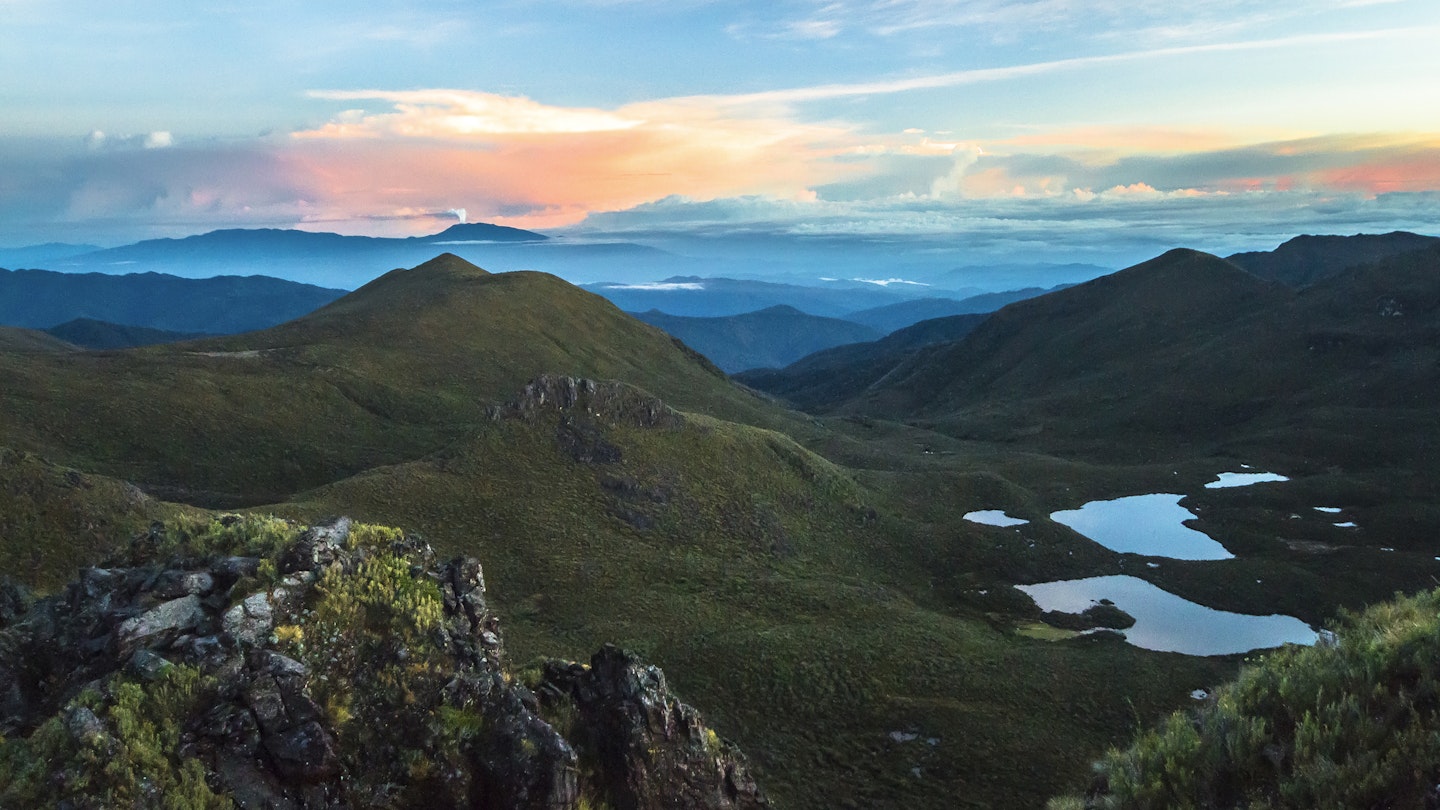Share
Jul 11, 2018 • 5 min read

Discovering the Wonders of Costa Rica’s National Parks
Covering approximately 10% of Costa Rican territory, the national parks protect a stunning array of landscapes—wetlands and forests, caves and volcanoes, and habitats for countless creatures. This natural resource is a treasure waiting for you to discover: summit cloud-shrouded peaks or delve into dense jungles; trek overland or barrel down mountainsides; spot a scarlet macaw or hear a howler monkey. Choose your adventure, pick a park, and embark on a wild journey in Costa Rica.
Hiking Through Costa Rica
Engaging in at least some hiking in Costa Rica is practically mandatory, as it’s the optimal way to experience some of the country’s top attractions. Fortunately, incredible sights can often be enjoyed on relatively easy day hikes. It doesn’t take long to discover mesmerizing waterfalls at Volcán Arenal National Park or to marvel at the cerulean blue waters of Río Celeste at Volcán Tenorio National Park. On a half-day hike, you can peer into the volcanic crater at Volcán Poás or observe bubbling mudpots and fumaroles at Rincón de la Vieja.
With additional time and effort, hikers can ascend higher into the mountains or venture deeper into the forest. The most popular multi-day trek is through the clouds to the summit of Cerro Chirripó (3820m), the highest peak in Costa Rica, situated in the eponymous park. In contrast, hiking across Corcovado National Park reveals pristine coastal rainforest—unmatched for observing wildlife. Both treks necessitate a minimum of two days, with overnight stops in designated areas; an extra day is recommended to fully immerse in the experience.
Some national parks provide opportunities for even longer hiking, especially in Chirripó, Corcovado, and La Amistad International Park, the largest and most remote park in the country. Be mindful that these long-distance trails are generally less crowded and not well-marked, making it advisable (and sometimes required) to hire a local guide.
Biking Adventures
If you prefer to explore at a faster pace, experiencing Costa Rica on two wheels is an exciting option. Mountain biking has surged in popularity, owing to the myriad challenges posed by diverse and rugged terrain. An eminent example is La Ruta de los Conquistadores, regarded as one of the toughest bike races globally. This three-day stage race spans 161km from the Pacific to the Caribbean, traversing multiple national parks, from the tropical rainforest of Carara to the volcanic peak of Volcán Irazú. The event showcases Costa Rica’s remarkable natural beauty while highlighting the importance of conservation efforts. (However, many participants often find themselves too exhausted to take in the surrounding scenery!)
If you prefer shorter biking excursions, various less strenuous mountain biking routes are available. Numerous bike tour and rental companies operate in most major tourist areas, but the quality of equipment can vary greatly. The best trail networks can be found around Volcán Arenal, Manuel Antonio, Corcovado, and Volcán Irazú National Parks.
Horseback Riding in Costa Rica
When visiting Costa Rica, embracing local customs can enrich your experience. Exploring the countryside on horseback is a traditional and cherished mode of travel. Today, horse farms and tour companies are closely monitored to ensure the humane treatment of horses. Riding tours are widely available in main tourist destinations, often passing through national parks, providing a wonderful way to appreciate the country’s natural beauty.
The area surrounding Volcán Arenal National Park is particularly popular for horseback riding, partly due to its cowboy culture, characterized by expansive cattle ranches and breathtaking scenery. Riders can choose to embark on day rides or week-long adventures, exploring lush forests, mountain slopes, and quaint villages. Adventurous riders might undertake the renowned route between Monteverde and Arenal on horseback.

Wildlife Watching & Birdwatching
One of the greatest thrills of exploring Costa Rica’s national parks is the opportunity to observe breathtaking birds, insects, reptiles, and mammals in their natural environments. You don’t have to venture far to spot playful monkeys, lounging sloths, and vibrant birds flitting amongst the treetops. Manuel Antonio is the country’s smallest yet most popular national park and serves as an excellent location to see common species, including capuchin monkeys, howler monkeys, two- and three-toed sloths, and white-nosed coatis, as well as the rare Central American squirrel monkey.
However, the finest wildlife watching is arguably found in Corcovado National Park, especially at the Sirena ranger station. Because of its location in the heart of the park, reaching the station necessitates a one- or two-day hike (although charter flights are accessible). Approximately half of Costa Rica’s animal species reside here in Corcovado. If you manage to reach Sirena, you’re likely to see various wildlife, including all four monkey species, white-lipped and collared peccaries, Baird’s tapirs, and northern tamanduas, along with more common mammals like coatis and sloths. Corcovado is also home to the largest population of scarlet macaws, often seen along the coastal paths.
Birdwatchers flock to national parks to catch sight of the country’s most iconic species—the scarlet macaw at Carara and the resplendent quetzal at Los Quetzales National Park. In recent years, the great green macaw has made a notable comeback thanks to habitat restoration efforts around the proposed Maquenque National Park. Notably, wading and water birds thrive in the wetlands of Palo Verde, while countless species inhabit the rainforests and cloud forests throughout the nation. Bird enthusiasts can look forward to spotting 630 indigenous species, in addition to several hundred migratory birds that may pass through.





